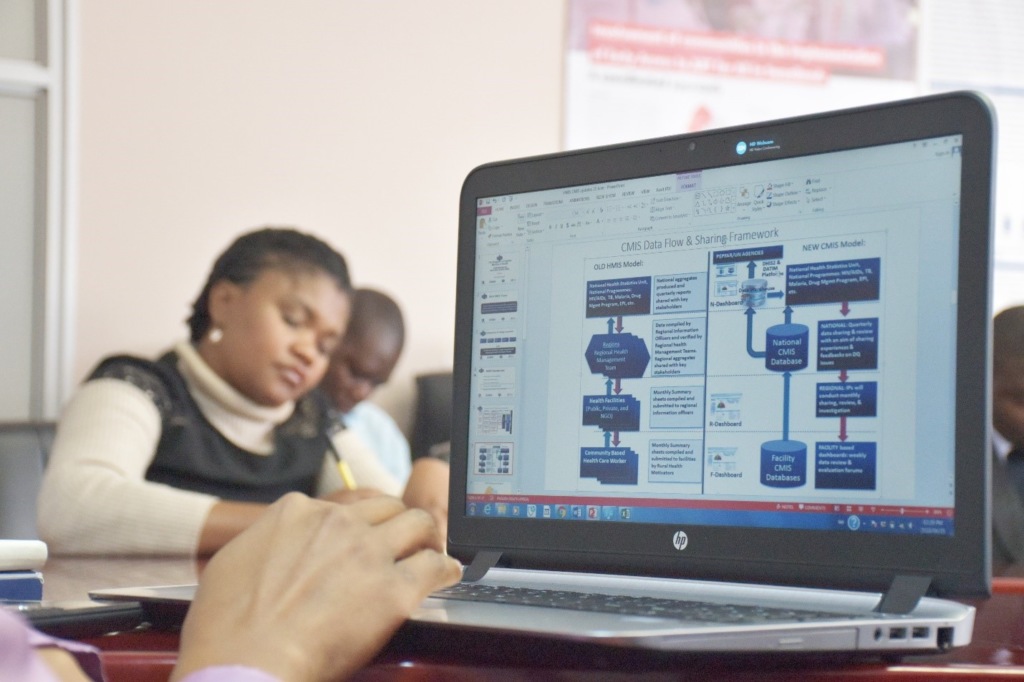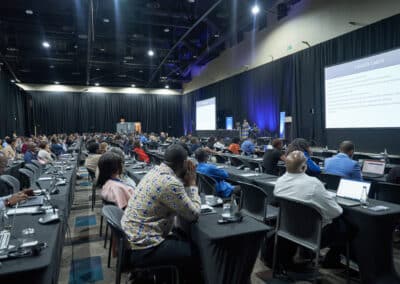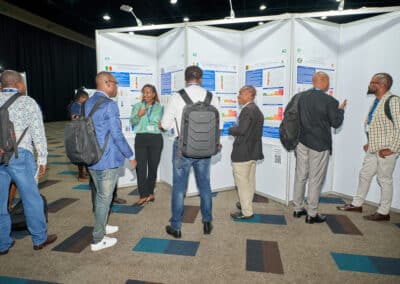Since the HIV Coverage, Quality, and Impact Network’s (CQUIN) inception, monitoring and evaluation (M&E) of differentiated service delivery (DSD) has been a top priority for member countries. That’s why in 2017, CQUIN launched the differentiated M&E community of practice to help countries share experiences and work together to develop resources that help M&E systems evolve and adapt to the changing landscape of HIV services.
The first tool on which community of practice members collaborated was the M&E Framework for DSD, which prioritizes M&E measures to track the scale-up, coverage, and performance of DSD models for antiretroviral treatment (ART). Since the Framework was rolled out in March 2018, ministries of health in at least six CQUIN countries—including Uganda, Eswatini, and Zimbabwe—have used it to guide the development of national tools and strategies for differentiated M&E.
The Framework defines a broad set of indicators, including measures of patient experience, DSD model uptake, patient outcomes under DSD models, and service efficiency. From this master list of indicators, countries can select the most relevant measures and make adaptations based on their priorities and current stage of DSD implementation. The indicators were developed by the CQUIN differentiated M&E community of practice members, following principles outlined in articles in the Journal of International AIDS Society (JIAS) and the journal AIDS that were co-authored by ICAP and outlined a pragmatic and parsimonious approach to M&E of DSD.
“I saw representatives from many countries sharing their experiences; it was very informative,” said Ivan Lukabwe, an M&E program officer with the STD/AIDS Control Programme at the Ministry of Health in Uganda, who joined the community of practice in 2017. “My colleagues and I helped develop the Framework. It’s important to us that we had a part in creating something that we’ll use.”
According to Mr. Lukabwe, the Framework has been a guide for the Ministry as they conduct site support supervision exercises and collect data on patient satisfaction and DSD coverage. “We have a three- to six-month plan for M&E,” said Mr. Lukabwe. “We’ve completed the tools and are ensuring that health care workers understand how to categorize patients and send in routine data to the national system. We hope to have these tools fully rolled out with the DSD components by July 2019.”
In Eswatini, the Ministry of Health adopted two indicators from the Framework to measure client retention and viral load testing for those enrolled in DSD models across regions. “We adapted the Framework and used it to create our data collection tool for our semi-annual review meeting,” said Hervé Nzereka Kambale, MD, MPhil, differentiated service delivery advisor for the Eswatini National AIDS Programme (ENAP).
“We also used the Framework to inform indicators for our quality improvement for DSD project, which we’ve implemented in three facilities and are working to expand to 23 facilities, including all regional hospitals, health centers, and some high-volume clinics,” noted Dr. Kambale. “We used to only focus on DSD coverage, but the Framework has allowed us to see the impact of DSD in Eswatini.”
In Zimbabwe, the Framework has helped the Ministry of Health and Child Care measure facility and patient coverage, and DSD uptake. According to Clorata Gwanzura, MBChB, MPH, the DSD medical officer at the Ministry’s AIDS, TB, and STI Program, there are plans for large-scale DSD data collection, which will include several indicators from the Framework that are not yet widely measured, including the average numbers of drug pickups and clinical visits per recipient of care per year. These measures will provide high-level indications of whether DSD scale-up is resulting in a reduced clinic visit burden for recipients of care, and clinic decongestion for health systems.
Dr. Gwanzura noted the importance of a June 2018 CQUIN south-to-south visit to Eswatini, where she observed a facility-based demonstration of Eswatini’s client management information system (CMIS), which has been updated with input from CQUIN to collect DSD-specific information needed to routinely calculate and monitor Framework indicators.
“We observed the system updates intended to add functionality around differentiated M&E,” said Dr. Gwanzura. “Eswatini has a way of differentiating refill and clinical visits in the system, and we’ve since adapted our electronic management system based on what we learned from that visit.”
“The CQUIN Network is fully invested in improving M&E of DSD,” said William Reidy, PhD, MPH, senior strategic information advisor at ICAP at Columbia University and assistant professor of epidemiology at Columbia’s Mailman School of Public Health. Dr. Reidy led the Framework’s development, and is lead author of the aforementioned viewpoint in the journal AIDS outlining what an integrated, streamlined M&E approach to DSD could look like.
“The Framework was created to help countries focus on collecting the most essential data to assess the coverage, quality, and impact of differentiated ART models,” said Dr. Reidy. “This data can help programs ensure that recipients of care are being offered the DSD model options they prefer and can benefit from. It also confirms that the models are serving them well, as shown by ongoing measures of viral suppression and engagement in care under DSD.”
Countries are eager to use DSD data for program review, but are not yet implementing differentiated M&E nationally. That’s why the community of practice has moved on from defining the measures needed to monitor DSD programs to the development of a new toolkit, which will provide guidance on conducting pragmatic ad-hoc data collection and DSD data review meetings. The community of practice sees the Framework and data review meeting toolkit as fundamental building blocks to establish effective monitoring of DSD for ART as differentiated models are scaled up and integrated into national practice. The new data review meeting toolkit is expected to be introduced at CQUIN’s Annual Meeting in November 2019.







